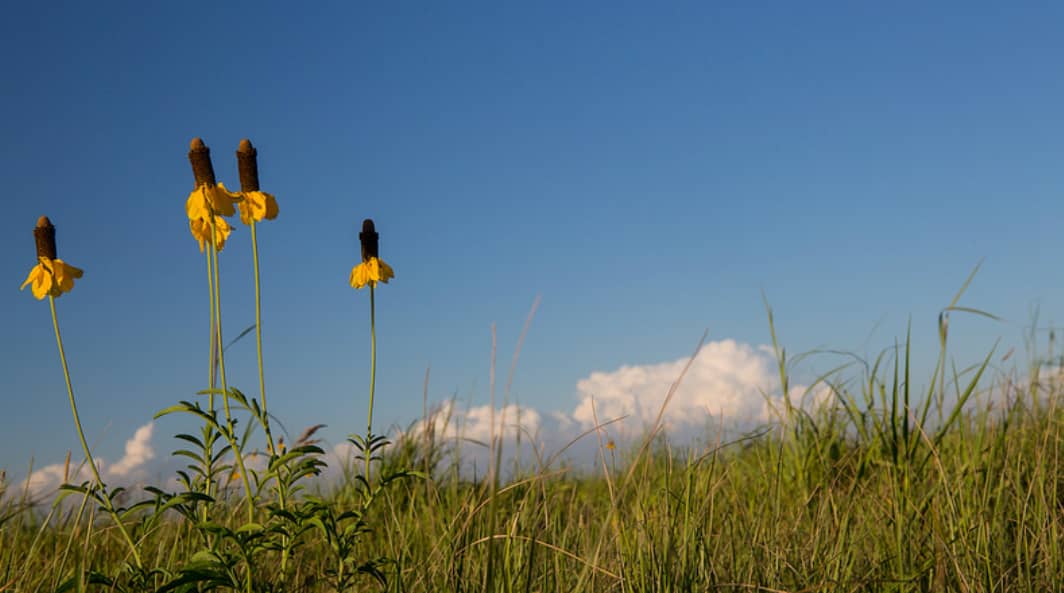Largest Prairie-wetland Restoration in U.S. History Hits Major Milestone
OutdoorHub 12.19.12

The U.S. Fish and Wildlife Service and The Nature Conservancy today announced the addition of 2,675 acres to Glacial Ridge National Wildlife Refuge in northwest Minnesota. The property is the last large block of habitat acquired by the Conservancy in 2000 that will be added to the Refuge.
“Glacial Ridge is one of the most ambitious conservation projects ever undertaken in Minnesota,” said Refuge Supervisor Jim Leach of the U.S. Fish and Wildlife Service. “It’s the largest prairie-wetland restoration effort in U.S. history. And while we have more work to do, this is a major milestone.”
“Twelve years ago, Glacial Ridge was largely used for row crop agriculture. Today, almost 20,640 acres of habitat protected and restored by the Conservancy and its partners form the core of Glacial Ridge National Wildlife Refuge,” continues Leach.
Peggy Ladner, who directs The Nature Conservancy’s work in Minnesota, said that “putting Glacial Ridge back together again was an unprecedented challenge.”
“But with help from our partners including not only the U.S. Fish and Wildlife Service, but also the Natural Resources Conservation Service, which made the restoration possible through its Wetlands Reserve Program, Glacial Ridge is paying off for wildlife, the local community and others who visit the refuge,” Ladner said. “It shows that if you think big and work together, there’s no limit to what can be accomplished.”
In 2000, the Conservancy purchased 24,248 acres at Glacial Ridge and began the long process of restoration. In 12 years, the Conservancy restored almost 20,640 acres, reconstructing 3,068 acres of wetlands in 258 basins that are already being used by waterfowl, planting 17,000 acres of prairie and filling 110 miles of drainage ditches.
Glacial Ridge National Wildlife Refuge was established in 2004. The Refuge provides excellent wetland and grassland habitat for mallards, northern pintails, marbled godwits, tundra swans, sandhill cranes, prairie chickens and many other waterfowl and grassland bird species. It also provides numerous public recreational opportunities, such as hunting, wildlife observation, photography and environmental education.
National Wildlife Refuges bring substantial economic benefits to the American public.Habitat restoration efforts like Glacial Ridge are happening across more than 560 refuges nationwide and, taken collectively, yield an average local economic contribution of $1.4 million annually. According to an economic report released earlier this year by the U.S. Department of the Interior (DOI), this benefit includes the creation of jobs and the growth of new, small businesses.
In addition to the economic benefits highlighted in the DOI report, Glacial Ridge National Wildlife Refuge has provided and continues to provide other benefits to neighboring communities:
- Two wells on the property supply clean drinking water to the nearby town of Crookston.
- The restored prairies and wetlands store water and help slow runoff into rivers and streams, which benefits farms and communities downstream during flood conditions.
- Area elementary school and university students use Glacial Ridge as an “outdoor classroom” for nature study and research.
- Glacial Ridge provides thousands of acres of excellent quality prairie pothole habitat for hunters in pursuit of deer, waterfowl and other game species.
- Refuge staff are working with a neighboring landowner to use cattle grazing in combination with prescribed fire to manage 2,100 acres of prairie at Glacial Ridge. The collaboration returns grazing to the prairie landscape as a management tool while providing much-needed grazing land to the local rancher and revenue to the county.
- Four prairie chicken viewing blinds bring bird lovers from across the U.S. and other countries to Glacial Ridge each spring, providing increased tourism revenue to local businesses. The Crookston Chamber of Commerce advertises the blinds and takes reservations.
“The restoration of the prairie landscape at Glacial Ridge is an excellent example of how a partnership in land management can benefit all,” noted refuge manager Dave Bennett.
“This model of partnership will continue as these restored habitats are managed into the future – where good land stewardship can be beneficial to natural land functions and the local economy.”
Glacial Ridge National Wildlife Refuge, part of the 96-million acre National Wildlife Refuge System, will include nearly 38,000 acres of wetland and grassland habitat once it is completed.
Learn more about The Nature Conservancy by visiting http://www.nature.org/minnesota.

